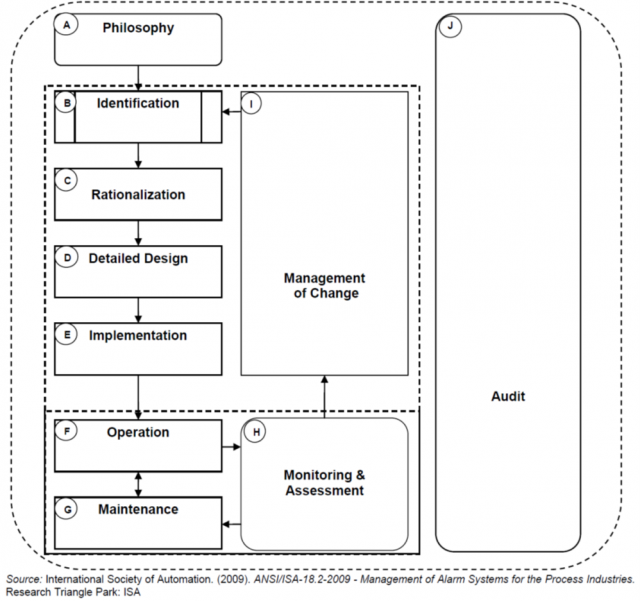Data Center
Alarm Management System
Alarm management is a set of rules, which ensure that the events directly or indirectly impacting the electrical, mechanical, or electromechanical infrastructures of the data center are leveled and are notified and reported to the manager or the facility shift staff through various communication methods (audio, email, SMS etc.).
The Alarm Management System provides configuration management, short-term deviation (incident) detection, risk management in field activities, status assessment independent of people and higher operational performance.
As seen in the Figure below, a professional Alarm System should be aligned and consistent with “Change Management” and “Monitoring & Assessment.” Otomatica ensures this alignment and consistency through its “Integrated Infrastructure Management System,” thanks to its comprehensive knowledge of critical infrastructure systems’ and “Data Center Sustainable Operation” consultancy experiences.
Not all the “incidents” treat the availability, performance and reliability of the IT and infrastructure equipment in the same level of escalation. But it does not mean that some incident can be overlooked or ignored completely. Otomatica prioritize the incidents according to the infrastructure redundancy, capacity, load, resource, environment, and event management based on design and standards. On the other hand, all the incidents are kept on historical, inventory and other orders, in order to enable the historical and main cause analyses.

ISA-18.2 Alarm Lifecycle
With Otomatica’s perfect DC Monitoring System, the “Operation Team” can predict the risks at the site, perform critical maneuvers by analyzing and identifying the root causes of the incident, have sufficient knowledge on each system to decide on emergency responses, and conduct the relevant corrective actions.
Otomatica delivers DC Alarm Management System in compliance with the ISA-18.2 standard, ensuring the most effective behavioral performance from the operation staff.
ISA-18.2 was prepared with a lifecycle consisting of ten stages (ref. Figure). These are:
Alarm Philosophy: Sets out the purposes of the alarm system and the business processes required to meet these objectives.
Identification: The required alarms are identified.
Rationalization: It is ensured that an alarm meets the demands specified in the alarm philosophy, including prioritization, classification, setting adjustment and documentation tasks.
Detailed Design: The process of designing the aspects of the alarm in a way that meets the requirements specified in the rationalization and the philosophy, requires certain decisions regarding human-machine interface (HMI) definitions, and special or advanced techniques are used.
Implementation: The alarm design is rendered operational. This may involve commissioning, testing, and training activities.
Operation: The alarm is operating. This stage includes refreshing training if necessary.
Maintenance: The alarm is not functioning due to test or repair activities. The behavior of the system is decided during this period.
Monitoring and Evaluation: The performance of the alarm system is monitored continuously and reported against the targets set in the alarm philosophy.
Change Management: Any changes in the alarm system are managed with a defined process.
Audit: Periodic examinations are conducted in order to preserve the integrity of the alarm system and to protect the alarm management business processes.


